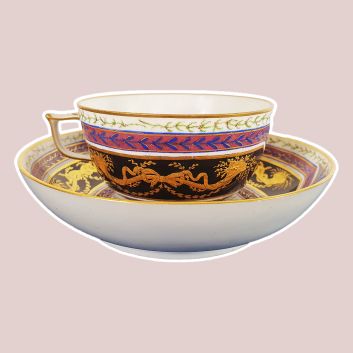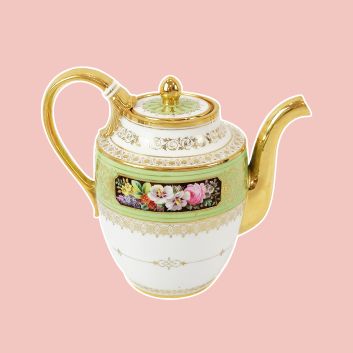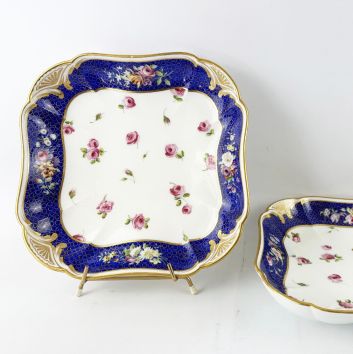2024 rating and value of Sèvres porcelain cookies

If you own a porcelain cookie from the Sèvres factory, or one made after it, and would like to know its value, our state-approved experts and auctioneers will offer you their appraisal services. Our specialists will carry out a free appraisal of your piece, and provide you with a precise estimate of its value on today's market. Then, if you wish to sell your work, we'll guide you towards the best possible arrangement to obtain the optimum price.
Rating and value of Sèvres porcelain cookies
Sèvres porcelain is known and appreciated throughout Europe. It was one of the first royal manufactures, founded by Louis XV in Vincennes. Today, the price of certain pieces continues to rise under the auctioneer's hammer. Works in Sèvres porcelain cookie are highly prized, particularly by French buyers, and the price at which they sell on the art market ranges from €10 to €489,000, a considerable delta but one that speaks volumes about the value that can be attributed to Sèvres cookies. In 2018, a Sèvres cookie group, Canard aux nénuphars, dating from 1972 and made by François-Xavier Lalanne sold for €489,000, whereas it was estimated at €200,000 to €300,000.
Order of value from simple porcelain to the most prestigious
Type of cookie | Results |
|---|---|
Cookie medallion | From €10 to €1,800 |
Cookie statuette | From €20 to €42,000 |
Cookie group | From €20 to €489,000 |
Response in less than 24h
Style and technique of Sèvres porcelain cookies
Sèvres porcelain developed hard porcelain, but originally produced soft porcelain, invented by Louis-François Ier Gravant. After the discovery of French kaolin, Sèvres porcelain became hard and was marketed from 1773. The factory produces vases, services and cookies.
Cookies were developed at the instigation of Louis XV and Louis XVI as diplomatic gifts for export, to showcase the talent of French craftsmen. Initially implemented using the pastillage technique, porcelain is fired only once at a very high temperature (1380°C) to obtain a smooth, precise, marble-like appearance with a more matte finish.
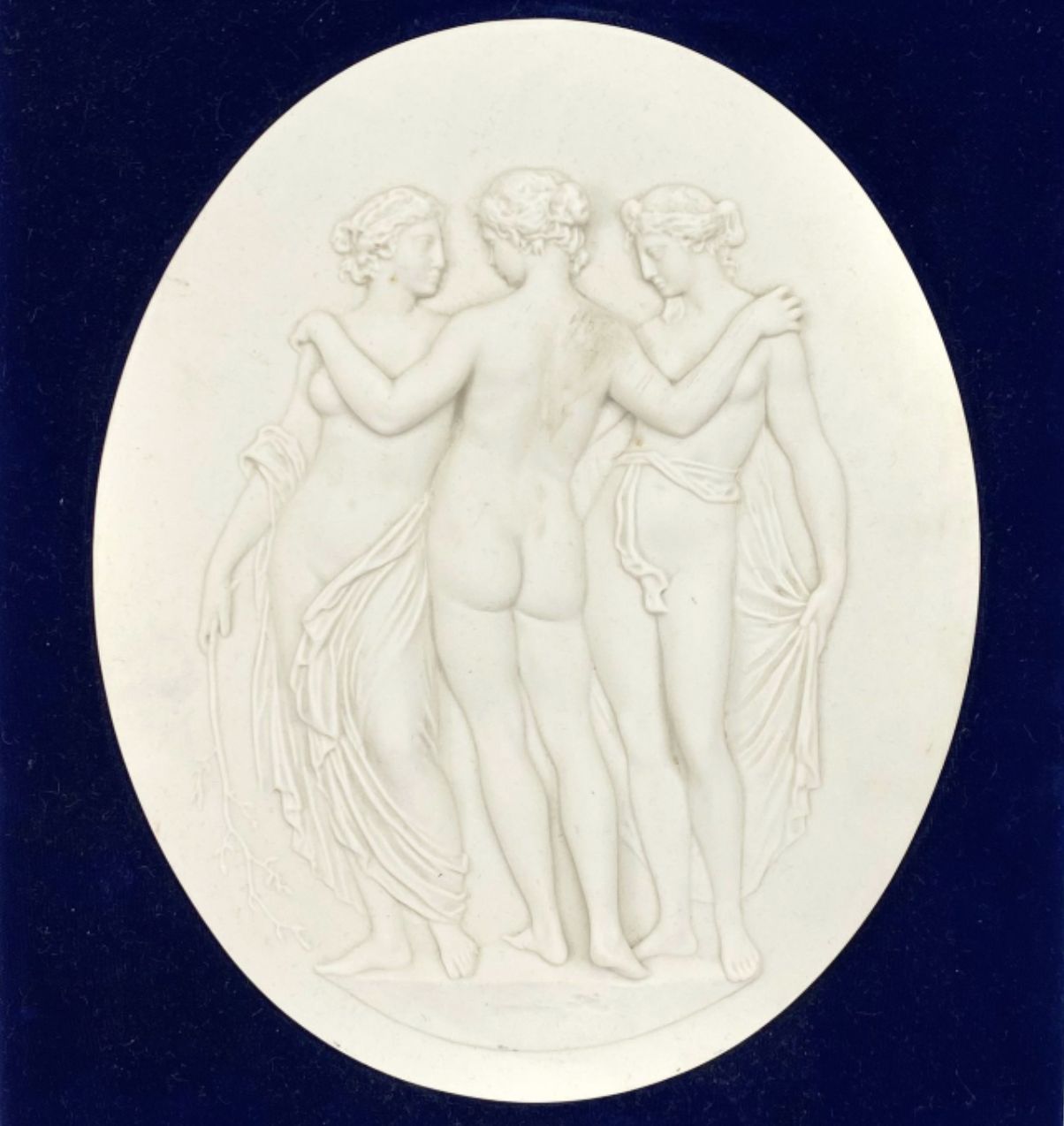
History of the Sèvres factory
The history of the Meissen Royal Manufactory began in 1740 thanks to the Marquise de Pompadour, mistress of Louis XV, with the aim of having a royal production able to compete with the Meissen Manufactory, which already possessed the formula for hard porcelain as well as various deposits of kaolin.
Initially based in Vincennes, it was moved to Sèvres in 1756, hence its name for several centuries. In the same year, Louis XV became the owner of all the shares, giving him total control over the factory. Four years later, the factory was bought out by the Domaine de la Couronne (today's public domain).
Bertin, Louis XV's minister, became a commissionaire for the Sèvres factory and set out to find the formula for creating hard porcelain.
Using models acquired from the German factory in Frankenthal, the Sèvres chemists tried to find the formula, which was finally given to them by Pierre-Antoine Hannong with the help of a notary.
However, even with the formula, France lacked the kaolin deposits to use it. The first kaolin deposit was discovered in 1765.
The Sèvres factory set itself apart with the creation of a pigment: Sèvres blue, obtained by incorporating cobalt oxide into the paste.
In the 19th century, ceramist Ambroise Millet modernized the porcelain firing process, installing new kilns.
Prior to 2009, the Manufacture Nationale de Sèvres was a national department. On that date, it became a public establishment by decree.

The value of Sèvres porcelain cookies on the auction market
Sèvres porcelain is highly prized at auction. It sells more or less well, depending on its state of preservation, the age of the piece and the artist who may have signed it.
Porcelain cookies are part of the stylistic and historical identity of the Sèvres factory. The first ones, made for the monarchy, are quoted on the auction market. There are neoclassical pieces whose prices are a little lower, although certain artists such as Agathon Léonard stand out, as well as contemporary works by 20th-century sculptors whose work is generally highly valued on the art market. These include François Pompon and François-Xavier Lalanne.
Recognizing a Sèvres piece
Pieces produced by the Sèvres factory are generally signed and hallmarked. The signature may have varied over the centuries. Here's an example:
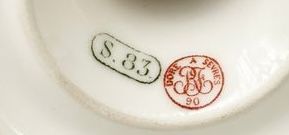
Knowing the value of a work
If you happen to own a piece of Sèvres porcelain or an "après" piece, don't hesitate to request a free appraisal using the form on our website. A member of our team of experts and certified auctioneers will contact you promptly to provide you with an estimate of the market value of your work, as well as any relevant information about it. If you're thinking of selling your work, our specialists will also be on hand to offer you alternatives for selling it at the best possible price, taking into account market trends.
Response in less than 24h
Related topics
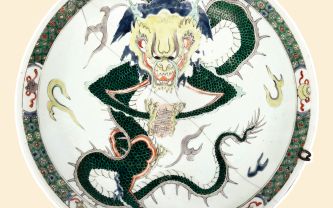
To make estimate free its Asian art: painting, bro...
Asian art is a fascinating field, with a wide variety of objects that bear witness to the history and culture of Asian civilizations.
Read more >

Rating and value of old paintings, drawings, Belgian engravings...
Early paintings by the Antwerp school are very popular at auction, and their value is rising. Rubens and others are highly prized.
Read more >
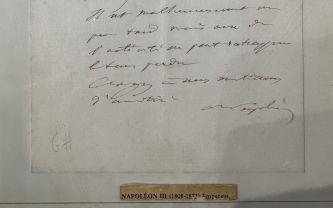
Rating and value of manuscripts and handwritten letters
Manuscripts and handwritten letters are auction items that can fetch extremely high prices, depending on the author.
Read more >
Secure site, anonymity preserved
State-approved auctioneer and expert
Free, certified estimates
